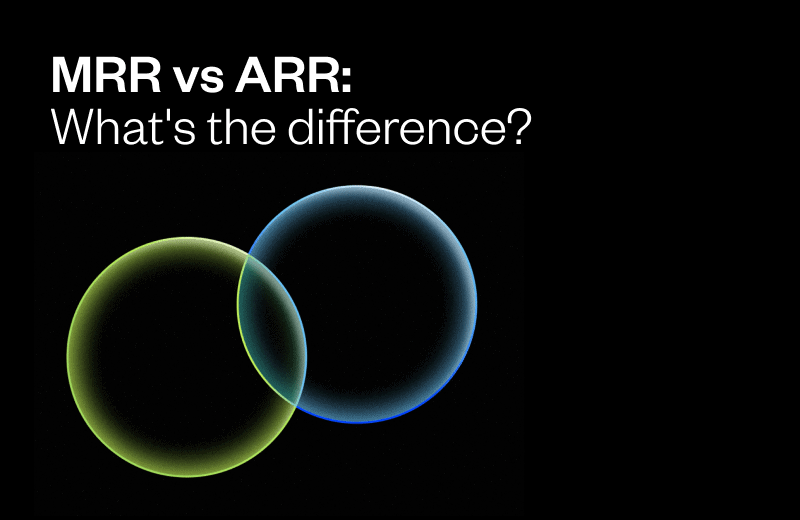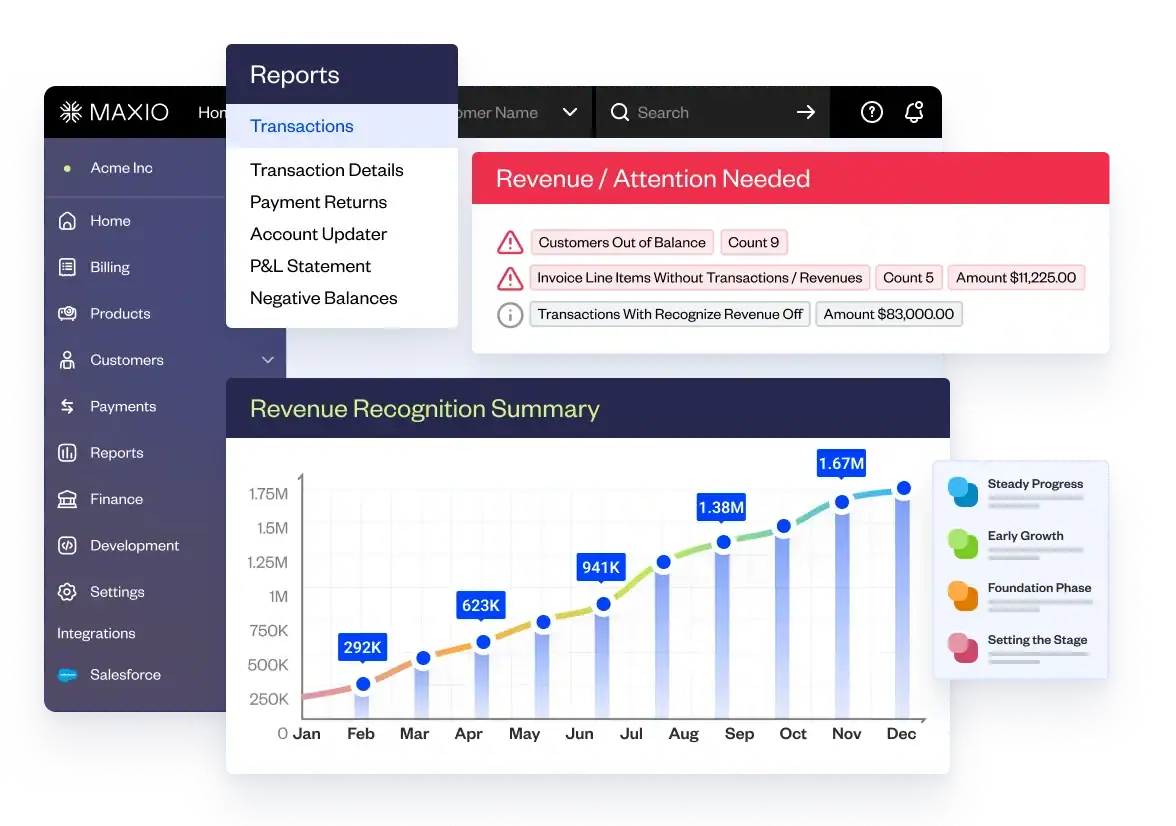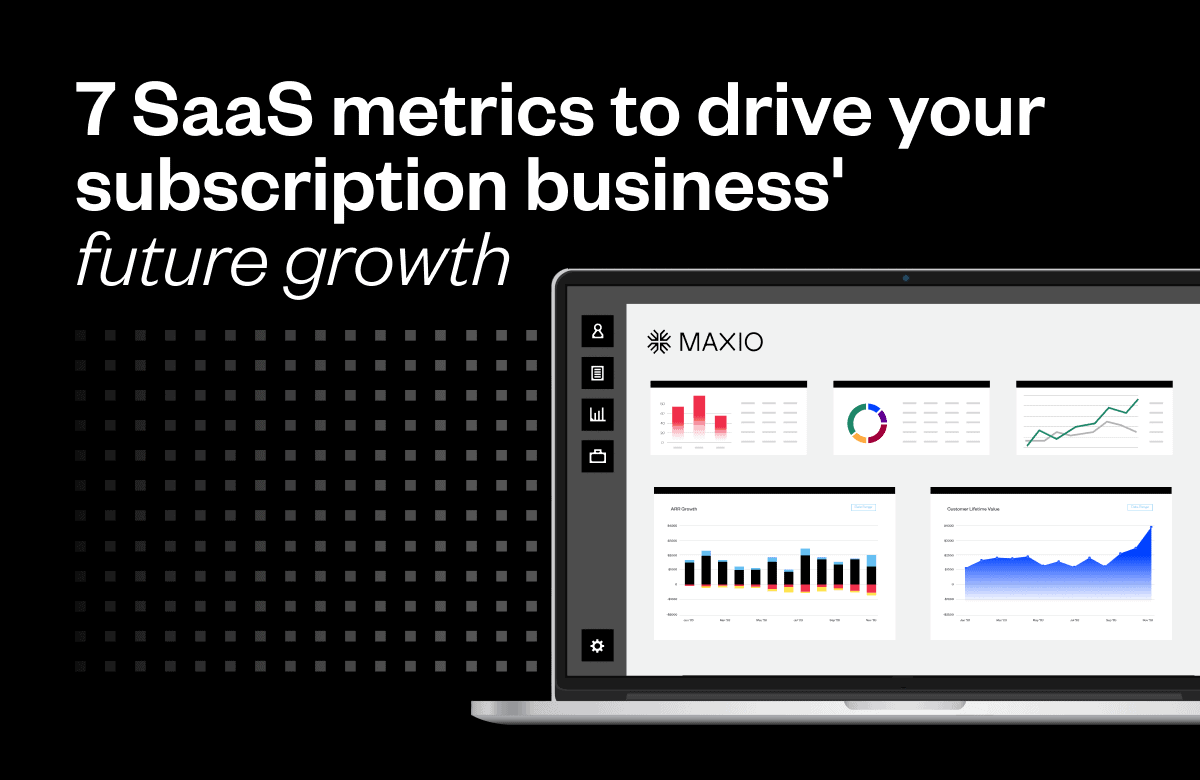Cash burn and capital spending are inevitable when trying to scale a SaaS venture, especially in the early startup stages. Luckily, the recurring revenue brought in from subscription models allows SaaS businesses to generate consistent revenue month over month, keep up with capital spending, and scale their way to a successful merger, acquisition, or IPO. In short, recurring revenue fuels growth in a subscription-based revenue model like those frequently used in SaaS.
Recurring revenue is commonly measured as either monthly recurring revenue (MRR) or annual recurring revenue (ARR). In relation to a SaaS business, this is usually made up of income from monthly or yearly subscriptions to cloud-based software.
MRR vs ARR at a glance
MRR and ARR are both valuable figures for measuring recurring revenue. Where MRR measures recurring revenue on a monthly basis, ARR measures on an annual basis.
There are several ways to drill your MRR data down by focusing specifically on the following areas:
- New or reactivated subscriptions
- Customer renewals
- Upgrade subscriptions or add-ons
- Downgraded subscriptions
- Canceled subscriptions
Because ARR looks at a 12-month period instead of just one month, it provides a more comprehensive overview of your revenue figures. Meanwhile, MRR provides more granular insights at the month-to-month level.
For this reason, MRR is far more commonly used for most B2B SaaS subscription businesses—even those organizations that offer annual subscriptions. As new subscribers sign on, subscriptions shift up or down, and churning customers leave, month-to-month data provides faster insights that businesses can use to take action on.
Tracking ARR can make sense for SaaS companies that have longer contract terms, and it can also be valuable for end-of-year calculations.
Why is recurring revenue important for SaaS businesses?
In the early days of tech, software was bought and sold like any other product via a single purchase. This was mostly due to the fact that software wasn’t yet available on the cloud. Now, software has become easily accessible to anyone with an internet connection and the buying process has changed as a result.
Using a subscription business model gives SaaS companies the flexibility to meet changing customer expectations and make rapid changes to their pricing and packaging. Tracking this recurring revenue as it comes in provides businesses with detailed insights into their financial health. It allows them to predict short-term and long-term growth, forecast revenue, monitor cash flow and growth rate, and optimize internal processes to increase MRR expansion rate.
Key metrics to track in a SaaS business model
SaaS enterprises typically use a recurring revenue business model, which means most of their revenue comes from customer subscriptions.
This translates to a constant fluctuation in customers and revenue, so it’s essential to keep track of these changes. The success of a SaaS revenue model can be measured in part by two critical SaaS metrics which both affect recurring revenue:
1. Customer acquisition rate
Customer acquisition is measured by the number of new customers that sign up for your SaaS product in a given period of time. At the same time, customer acquisition cost (CAC) is a vital metric for early-stage SaaS companies and can be improved by developing an effective customer acquisition strategy.
2. Customer retention rate
Customer retention is measured by the number of customers that renew their subscriptions in a given period of time. Customer retention and renewal rates reveal whether or not a SaaS company has a sustainable business model. If customer churn rates start to rise, your revenue could start to plateau or decline at an alarming rate.
Get Your Free SaaS Metrics Template
Template provides you with a comprehensive set of pre-built SaaS metrics (that you can trust) to wow investors and make key business decisions with confidence.
What is monthly recurring revenue (MRR) in SaaS?
Monthly recurring revenue is often cited as one of the most critical metrics for a SaaS business, particularly when used by C-level execs as a measure of company performance. Within the subscription industry, it’s essential to track MRR because it accounts for the vast majority of total revenue and is a strong indicator of future growth.
Committed monthly recurring revenue (CMRR) is the total value of the recurring portion of subscription revenue. In a term-based SaaS business, this means the portion of subscription revenue that is recognized each month; it should not be confused with contracted MRR, which is the value of the contracted recurring portion of subscription revenue. In many businesses, the values of these two metrics will often overlap, but the figures could differ significantly depending on your billing and pricing models.
There are several different ways to measure MRR, and each can be used to discover new business insights and improve your recurring revenue model.
What are the different types of SaaS MRR?
SaaS companies that use MRR to measure revenue predictability will typically focus on one or more KPIs that apply to their business. These can include the following:
MRR from new or reactivated subscriptions
This is the amount of revenue generated from newly acquired or returning customers. While both of these metrics are calculated similarly, revenue generated from returning customers should be calculated separately as reactivation MRR.
MRR from customer renewals
This is revenue that already exists from customers with ongoing subscriptions and can change month to month as users cancel, upgrade, or downgrade their subscriptions. These are important metrics to show the value of the product from the customer’s perception.
MRR from upgraded subscriptions and add-ons
MRR from subscription upgrades includes any additional revenue made from add-ons, upselling, and cross-selling. This is often calculated under the umbrella term of expansion MRR and is a good indicator of customer satisfaction and loyalty. Renewing or upgraded subscription contracts clearly indicate the value a product is bringing to the customer.
***
It’s equally important to take into account MRR losses, also known as contraction MRR. They include:
MRR losses from canceled subscriptions
Revenue loss incurred from canceled subscriptions is also commonly referred to as churn. Calculating churn gives SaaS businesses insights into what factors contribute the most to lost revenue.
MRR losses from downgraded subscriptions
Downgraded subscriptions account for lost revenue each month and should be added together for a monthly total. When calculated together with churn MRR, you get your total contraction MRR, indicating your total monthly subscription revenue loss.
How to calculate monthly recurring revenue (MRR)
In their simplest form, MRR calculations can be done like so:
MRR = (new MRR expansion MRR) – (churn contraction MRR)
Here’s a closer look at each of these separate revenue variables:
New MRR and expansion MRR
- New MRR can be calculated simply as the number of new subscribers multiplied by the subscription fee. For example, 12 new subscribers at $50 per subscription = $600 in new MRR.
- Renewed subscriptions can be calculated as ongoing subscribers multiplied by the subscription fee. For example, 100 ongoing subscribers at $50 per subscription = $5,000 in renewed MRR.
- MRR from upgraded subscriptions and add-ons (expansion MRR) can be calculated and added together individually. For example, four $20 subscription upgrades and two $30 subscription add-ons = $140
Churn and contraction MRR
- Churn MRR is calculated by multiplying the number of canceled subscriptions by the subscription fee. For example, if 20 customers canceled their $50 subscriptions, that’s $1,000 in churn MRR.
- Contraction MRR is calculated by adding the total cost of all subscription downgrades together. For example, 3 downgrades of $20 1 downgrade of $50 = $110.
What is annual recurring revenue (ARR) for SaaS?
Annual recurring revenue (ARR) is the same as MRR, only calculated on a yearly basis. It’s used more commonly by SaaS or subscription businesses with longer-term subscriptions, such as annual contracts, but it can also be useful in end-of-year calculations. ARR is equal to the value of your term subscription’s contracted recurring revenue components, normalized to a one-year period.
How to calculate annual recurring revenue (ARR)
To calculate your SaaS ARR, you can do the same calculations as MRR using figures over a 12-month period. However, several ARR components must be taken into account when making your ARR calculations to ensure accuracy and validate your financial metrics.
Why use MRR vs ARR?
Objectively speaking, there really are no compelling reasons to standardize on ARR versus MRR. Class dismissed. For those wanting extra credit, read on.
ARR is used almost exclusively in B2B subscription businesses and only when the minimum subscription term is a year. But, MRR is by far and away the most popular normalized revenue method for B2B subscription businesses, even for those with annual subscription terms (by the way, ARR is rarely used in B2C subscription businesses).
MRR vs ARR: Frequently asked questions
Who uses ARR?
ARR is frequently adopted by B2B SaaS businesses with multi-year terms and tends to be used in businesses with lower transaction volume and high transaction value. It is also not uncommon for companies that use ARR to also use MRR.
Are there any benefits to using ARR over MRR?
ARR does have one benefit over MRR: ARR aligns well with your GAAP revenue. MRR and monthly revenue can differ significantly in any given month due to different revenue allocations over 28, 29, 30 and 31 day months. Over a one-year term, ARR is generally going to line up much more closely with GAAP revenue over that period.
Is that a compelling reason to use ARR to measure monthly subscription plans and their success? Not really.
What is the downside of ARR vs MRR?
As far as drawbacks in standardizing on ARR over MRR for recurring revenue performance metrics, short agreement terms or billing periods can pose a challenge if you adopt a practice of associating or equating ARR to GAAP revenue. With a short subscription term, which could be due to a one-off agreement or a coterminous add-on service, the ARR is factored up relative to the contracted amount and then can grossly overstate “revenue” relative to reportable GAAP revenue.
Is that a compelling reason to avoid ARR? Not really.
Will VCs and investors be confused if you choose ARR over MRR?
Any venture capitalist who’s considering investing in your business will have a lot of questions, starting with your valuation and how your growth and finances stack up against industry benchmarks. Digging into your financials will give them those answers—but they’ll probably make some assumptions in the process.
For instance, if you walk into a VC meeting with a single slide full of ARR metrics, everyone in the room will know you are an annual subscription company. They’re likely to infer from ARR that you lean toward the ‘enterprise’ side of the marketplace.
If the same slide page has MRR metrics, they would need further information to determine if you were a B2C or B2B subscription business and to understand your relative price points and typical agreement duration.
ARR vs. MRR conclusion
Not convinced by the compelling explanations above? Good. Then you’ve figured it out: It doesn’t much matter which metrics you choose, as long as you pick one and stick with it. And if you don’t care, play it safe, go with the masses, and use MRR.
Read more about recurring revenue and other SaaS metrics on SaaSpedia.






